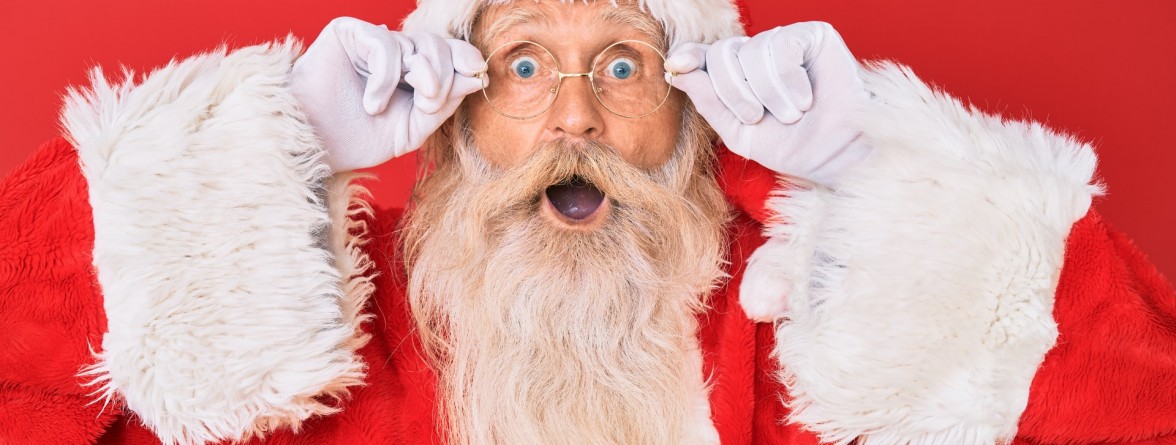By Astrid Soderstrom
Up in the extreme north of Finland, in one of the coldest, darkest places on the planet, lives Finland’s most influential man. His role in Finnish culture and tradition is just as important as the president’s, if not more. Furthermore, his influence stretches well beyond the Nordics, and each year, it is claimed that he visits over 300 million households all around the world.
This man is the Finnish Santa Claus – or the real Santa as some might say. According to legend, he lives somewhere around Korvatunturi, an ear-shaped mountain in Lapland. Santa, whose age is unknown, is secretive of the exact location of his home, due to the safety of himself, his wife, and his powerful guests. However, Santa’s workshop, located in Rovaniemi, is open to visitors all year round.
The workshop, also known as Santa Claus Village, sits right on the edge of the Arctic Circle. There, half of the year is dominated by winter with barely any daylight and the other half with days that never end. But in the village, Christmas is eternal. No matter what the time of the year, visitors are greeted by Christmas carols, decorated trees, and Santa’s little helpers in their signature red costumes. Then, of course, there’s Santa himself.
One of the buildings in the village is Santa’s main post office. Every year, he receives an overwhelming amount of letters (around half a million), which keep his postal elves employed all-year long. The postal address to write to Santa is Tähtikuja 1, 96930 Arctic Circle, FINLAND and it’s been used from approximately 200 countries so far. “Santa Claus’ Main Post Office also has a wonderfully international atmosphere, as visitors come here from all around the world. Most of our visitors come from Germany, France, Spain, Great Britain, Italy, Russia, America and Asian countries,” commented the stamp elf, Serenity Snowball, in an interview for Posti, the Finnish Post.
For Finnish kids, mailing a wish list to Santa is an important part of waiting for Christmas, and it’s followed by the anticipation of his visit. In Finnish culture, Santa does not sneak in down the chimney, but he is invited to the Christmas celebrations of the families in question. He spends a moment of his Christmas Eve talking with every kid about the passing year and their hopes and dreams, if they’re brave enough to talk. Santa’s presence is warm and calm, but little celebrators still get nervous around him.
Finland’s media, notoriously critical of the Finnish government, remains rather favourable to Santa. Their coverage is respectful of his image and privacy, since the concept of Santa is popular among old and young readers. When Santa departs for his annual trip, right before Christmas, it is broadcasted internationally and shown on Finnish TV as the main newscast of the evening. This summer, Santa was pictured at a vaccination center in Rovaniemi. “Due to Santa’s old age, he has already received both vaccinations,” read the story by Yle.
This favoritism might seem strange, taking into consideration Santa’s questionable past. The Finnish name of Santa, Joulupukki, roughly translates to Christmas goat and it refers to the old days in Finland, when young men dressed as goats used to go around the village after Christmas, asking for leftover food and drinks. They were rather scary-looking guests, with very little alcohol-control.
From his goat days, Santa has kept his long, warm fur coat, adding reddish features and trimmings to it as the years go by. Other parts of his typical fit are also traditionally Lappish, including brown leather boots. As he’s grown older, Santa has started to favour a longer, curly beard. He has also polished his image and is currently affiliated with a charity called the Santa Claus Foundation. According to the foundation’s website, it is dedicated to the values of goodwill, authenticity, cooperation, joy, and to the well-being and education of children in Finland and parts of Asia.
Working with the charity and representing Finland internationally keeps Santa busy throughout the year. Additionally, his gift-deliveries are expected at slightly different times in different parts of the world. But the busiest Santa gets is definitely in the soon-approaching month of December. Then, earliest deliveries will take place around December 5. On December 23, Santa embarks on his famous journey around the globe to all the rest of those children who expect him – but only if they’ve been nice! According to Santa’s representatives, the trip is possible with the help of his enduring reindeers and an invention called the Earth Rotational Speed Controller, on display in the main building of Santa Claus Village.




